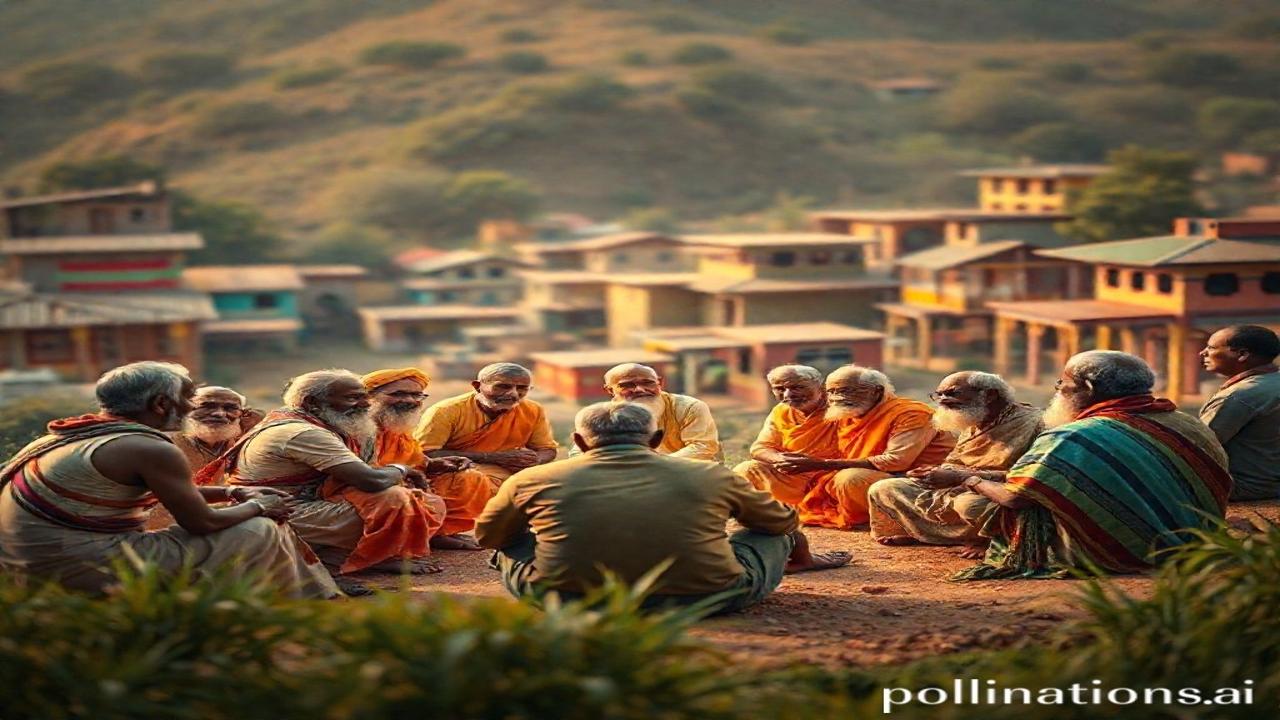Panchayat: Jab Gaon Bole, Toh Dilli Bhi Sune!
Kabhi socha hai, shaam dhale peepal ke ped ke neeche, ek aawaz gunjati thi… ek aawaz jo sirf gaon ki nahin, desh ki taqdeer likhti thi? Yeh aawaz thi Panchayat ki. Waqt ki dhool mein shayad iski dhamak thodi kam ho gayi hai, lekin aaj bhi, iski jadien Bharat ki mitti mein gehri utri hui hain. Come, let’s explore the magic of the Traditional Panchayat Systems!
Kya Hai Yeh Panchayat? (What is this Panchayat?)
Panchayat, simple words mein, ek gaon ki self-governing body hoti thi. Think of it as the OG Indian democracy, dating back thousands of years! Iska zikr vedon mein bhi milta hai. Panch, yaani paanch samajhdar log, milkar gaon ke saare mamlon ko suljhate the – zameen ke jhagde, paani ki samasya, marriage disputes… you name it!
The concept is ancient, but it really solidified during the Vedic Period. Remember, that’s way back, like 1500-500 BCE. It was a time when kingdoms were just starting to form, but the real power lay in these local, autonomous units.
Why was it important? Because it was of the people, by the people, for the people – long before that phrase became famous! Panchayat ensured that everyone had a voice, especially those who wouldn’t otherwise be heard. It was a system of justice, welfare, and community building, all rolled into one. It was the bedrock of rural India’s resilience.
Zamini Sach: Gaon, Log, Aur Jeevan (The Ground Truth: Village, People, and Life)
Imagine a typical day in a village governed by a Panchayat. Picture this:
“Sitaari bai ne aaj apni nayi saree pehni, jo unhone apne bete ki shaadi ke liye bachai thi. Aaj Panchayat hai, aur unhe zameen ke jhagde mein apna paksh rakhna hai.”
The Panchayat would meet under a banyan tree, the air thick with the scent of earth and cow dung. The Panch, usually elders respected for their wisdom and fairness, would listen to both sides. Farmers, artisans, even the village priest would have a say. Their voices, woven together, would form the final verdict.
Rulers like Chandragupta Maurya knew the importance of these village republics. They recognized that a strong kingdom relied on strong villages, and strong villages relied on their Panchayats. These were the unsung heroes, the silent guardians of India’s soul.
Dharohar Aur Pehchan: Aaj Ka Bharat (Heritage and Identity: Today’s India)
Even today, despite modern courts and legal systems, the spirit of the Panchayat lives on. We see it in “Khap Panchayats” (though they often get a bad rap for their outdated customs, their existence shows the inherent desire for local resolution), and in government initiatives that promote decentralization of power.
The idea of “Sarpanch” (village head) is still a crucial part of rural governance. The idea of “Justice at the grassroots” reflects this commitment to bringing power to the people. Panchayat’s values – communal harmony, fairness, and self-reliance – continue to resonate with Bharatiyata, that unique feeling of Indianness. It’s about taking responsibility for your community, solving problems together, and preserving our traditions.
Mazedar Tathya Ya Bhram-Bhanjak (Fun Fact or Myth-Buster)
Myth: Panchayats were only for men.
Truth: While historically men dominated, women often had significant influence behind the scenes. In some communities, women even held positions of power! Nowadays, many Panchayats are mandated to have female representation, ensuring that women’s voices are heard loud and clear.
Drishya Aur Bhavnayein (Visual & Sensory Layer)
Imagine the crackling fire at night, the aroma of freshly baked rotis filling the air. The feel of roughspun khadi on your skin. The sound of children’s laughter echoing in the distance. The weight of tradition, passed down through generations. These are the sensations that connect us to the legacy of the Panchayats, a legacy of resilience, community, and self-governance. The air smells like earth and hope.
Antim Vichar Ya Uddharan (Closing Insight or Quote)
“ग्रामो धर्मो महान् यत्र, तत्र कल्याणम् अनवरतम्” – “Where the village upholds dharma, there is eternal well-being.”
The Traditional Panchayat system, in its essence, teaches us that true power lies not in grand empires or towering institutions, but in the strength of our communities, in the wisdom of our elders, and in the unwavering belief in collective action. Let’s not forget this precious legacy; let’s nurture it, and let it guide us toward a better future.
